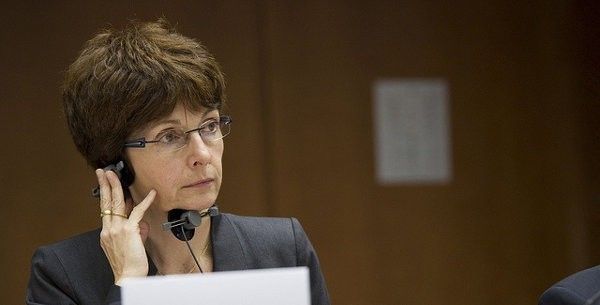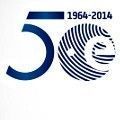
To mark the celebration of 50 years of European cooperation in space, Magali Vaissiere, we ask director of ESA's Telecommunications and Integrated Applications (TIA) Directorate, to highlight some of its most signficant accomplishments over the years, and how ARTES R&D continues to play a vital role in supporting the European satcoms industry.
This year we have been celebrating the anniversary of 50 years of European cooperation, innovation, and unique achievements in space. The Telecommunications directorate was established, initially as a department, in 1975. Looking back over the past four decades, what accomplishment impresses you most?
The Telecommunications Department, which later became the Directorate, has been able to repeatedly reinvent itself to adapt to the many changes which have taken place in the European telecommunications sector. In 1975, telecommunications was regulated by national governments and thus ESA programmes in this domain, like in all other domains where ESA was active, were wholly institutional programmes. With the advent of digital satellite TV technology in the beginning of the 90s, which allowed dozens of TV channels to be broadcast by one satellite, an open global satcom market started to emerge and grow rapidly. Later that decade came the full deregulation of the sector, leading to, for example, the privatization of the inter-governmental satellite operators Inmarsat and Eutelsat in Europe.
 Through the flexible ARTES Programme framework, TIA repositioned itself successfully to the competitiveness of the European industry on the world market. In short, we have had to continuously adapt to survive in a dynamic and competitive environment.
Through the flexible ARTES Programme framework, TIA repositioned itself successfully to the competitiveness of the European industry on the world market. In short, we have had to continuously adapt to survive in a dynamic and competitive environment.
You became director of TIA in 2008. Can you single out a specific accomplishment during these five years of which you are particularly proud?
Our first large Public Private Partnership, the Alphasat programme, will remain an accomplishment I am quite proud of. First, because of the high level of innovations embarked: first flight of the large European Alphabus plaform, the sophisticated communication payload based on a digital signal processor, and the hosted technology demonstrator payloads. Also, because it was the first Public Private Partnership of this size. Now it is working beautifully in orbit!
If you allow me to mention another accomplishment, I would like to cite the introduction and successful development of Integrated Applications Programme. With this initiative, which is not purely telecom, we are enabling the development of innovative uses of space technology and assets, with commercial applications opening new downstream markets. I am proud of the success of the IAP programme, of course, but also of the culture of openness and creativity that the mix of telecom and applications teams has created.
What is the most important goal that TIA needs to accomplish in the next five years?
The market is becoming more and more competitive; the pressure is not only on industry but also on us! Our challenge will be to anticipate as much as possible the trends in terms of new technology and services, but also to implement as fast as possible the projects in partnership with private partners. Our goal remains to support the European space industry in the most effective manner possible, so that it maintains a major share of the global market.
There are constant calls for austerity in Europe these days. Neoliberals think government intervention is overrated and that "the market should decide". Can you tell us why a pro-active industrial policy is vital and why member state support for the satellite telecommunications industry is critical?
The global satcom market is not a level playing field. There are parts of the world where industry enjoys large institutional contracts that cross-subsidize R&D or where the level of competition is quite restricted.
Our satcom industry needs to be supported in terms of R&D to be able to compete. In fact, the return rate on European R&D investment is quite high if you compare it with other countries like the United States.
For maximum impact, we need to continue to develop R&D in partnerships with industry, and set up ad hoc PPPs with operators within the ARTES Programme, which very effectively transforms R&D investment into successful commercial products and services. ARTES is key to securing the future of European and Canadian industry in the worldwide satcom market.




